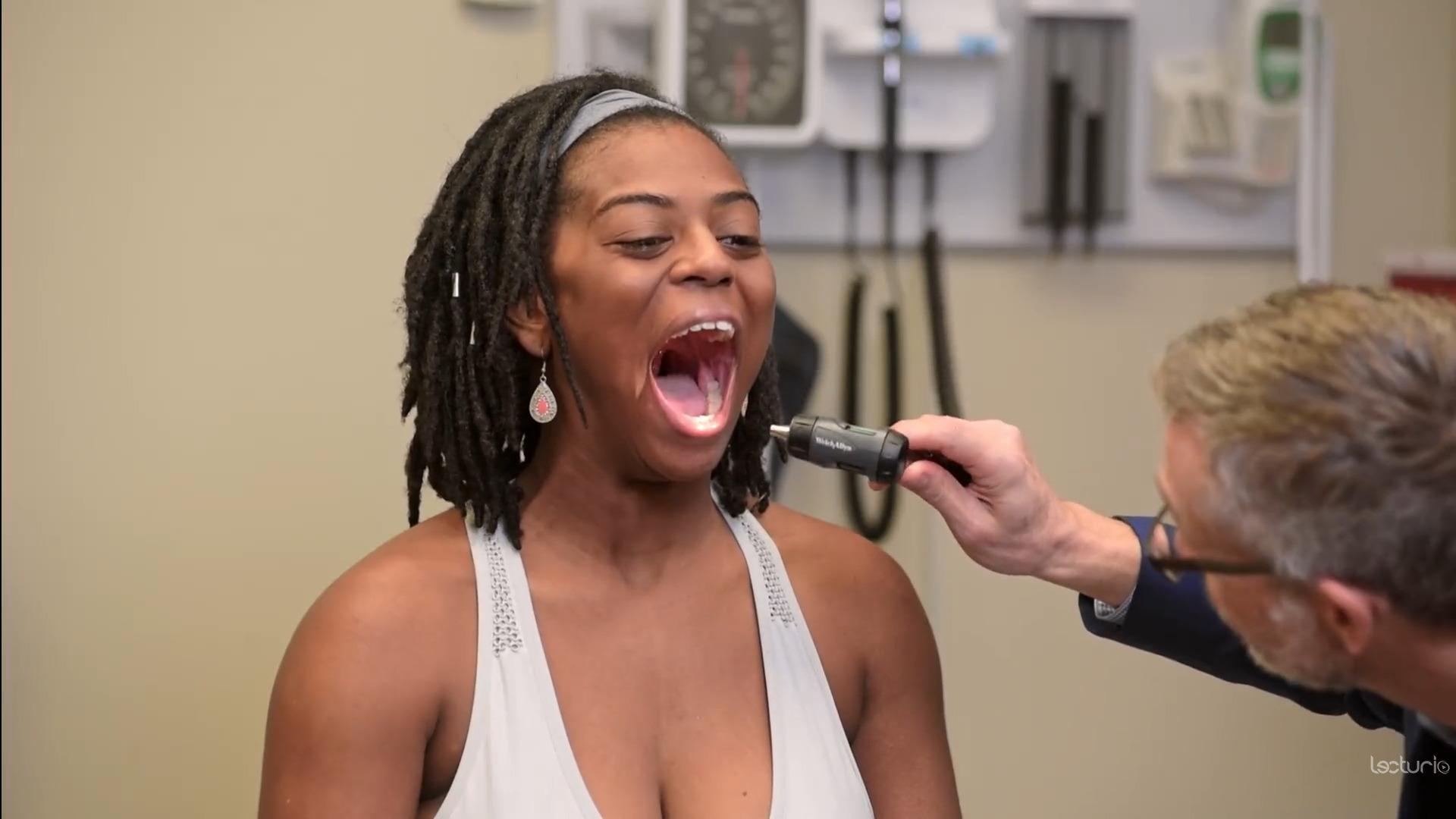Playlist
Show Playlist
Hide Playlist
Quick Review: Examination of the Skin
-
Quick-Review-Examination-of-the-Skin.pdf
-
Reference List Physical Examination.pdf
-
Download Lecture Overview
00:01 So let's review some of the content that we've covered during this lecture. 00:05 So patients with psoriasis, we've talked about some different findings that we may see. 00:10 And in particular, you may have this Auspitz sign that I described where you scrape off one of the plaques and you find these pinpoint areas of bleeding deep to where the lesion was peeled off. 00:22 Patients with atopic dermatitis should have symmetric erythema redness, possibly excoriation on the flexor surfaces, particularly around the wrists and the antecubital fossa. 00:36 With contact dermatitis, you expect a more focal area rather than a systemic disease, it can be severely itchy and you're looking for these well demarcated pink plaques at points of contact with the insulting agent. 00:50 And lastly, drug reaction. 00:53 These can be focal or more likely they are diffuse. 00:55 If somebody is taking a medication by mouth, you're looking for on history, recent exposure of a drug of a medication or other substance and it can be a maculopapular eruption, or it can be even something more subtle like dress syndrome, which progresses over many weeks. 01:15 Quick review of the terminology that we use in dermatology. 01:18 A nonpalpable 2.2 centimeters skin lesion is called a: A plaque, a papule, a patch, a macule, or a bulla. 01:34 Well, if it's nonpalpable it has to be either a macule or a patch. 01:40 And if it's 2.2 centimeters in size, you know it's larger than a centimeter and therefore it must be a patch. The answer is C. 01:49 Which of the following pairings is correct? The Nikolsky sign with psoriasis? Terry's nails with cirrhosis, half-and-half nails with a topic dermatitis Dermatographism with CKD, or the Auspitz sign with fungal infections. 02:08 Sending Nikolsky sign is something we associate with for example toxic epidermal necrolysis and pemphigus vulgaris. 02:17 So that would not be correct. 02:18 Terry's nails is in fact a finding that we oftentimes do see in patients with cirrhosis, so letter B is going to end up being correct. 02:26 Half-and-half nails we associate with CKD dramatic graphism is its own entity associated with a variety of autoimmune conditions. 02:34 And the Auspitz sign is something we characteristically see in psoriasis.
About the Lecture
The lecture Quick Review: Examination of the Skin by Stephen Holt, MD, MS is from the course Examination of the Skin.
Customer reviews
5,0 of 5 stars
| 5 Stars |
|
1 |
| 4 Stars |
|
0 |
| 3 Stars |
|
0 |
| 2 Stars |
|
0 |
| 1 Star |
|
0 |
1 customer review without text
1 user review without text




